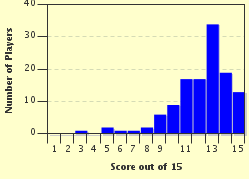Quiz Answer Key and Fun Facts
1. Which 1970s group originated such songs as "Make It with You," "Baby, I'm-a Want You" and "The Guitar Man"?
2. What 1975 hit for The Captain and Tennille brought Neil Sedaka his first ever Grammy Nomination?
"Young and beautiful, someday your looks will be gone.
When the others turn you off, who'll be turning you on?
I will! I will! I will! I Will!"
3. Who sang the theme to "The Love Boat" and included it on the 1979 album "Nobody Does It Better"?
4. As well as his solo hits such as "Desiree," "I Am, I Said" and "Song Sung Blue," which bass-baritone had a Billboard Hot 100 Number One duet with Barbra Streisand on "You Don't Bring Me Flowers" in 1978?
5. Which of these 1970s songs was a hit for The Commodores?
6. Which road did America sing about in the 1970s?
"Chewing on a piece of grass
Walking down the road
Tell me, how long you gonna stay here, Joe?
Some people say this town don't look good in snow
You don't care, I know"
7. In 1973, Diana Ross sang counterpoint with herself on which poignant song?
"Wasn't it me who said nothing good's going to last forever?
And wasn't it me who said let's just be glad for our time together?
It must have been hard to tell me you'd given all you had to give.
I can understand your feeling that way, everybody's got their life to live."
8. Which '60s girl group song did The Carpenters record in the 1970s?
9. What blond, blue-eyed Brooklynite, who started by writing advertising jingles such as those for Dr. Pepper, MacDonald's and State Farm insurance, became a superstar in the 1970s with hits including "New York City Rhythm," "Could It Be Magic" and "Copacabana"?
10. Leslie Bricusse and Anthony Newley's score for the 1971 movie "Willy Wonka and the Chocolate Factory" produced two popular hits, "Pure Imagination" and "The Candy Man." Which multi-talented member of the Rat Pack had a Top Ten hit with "The Candy Man" in 1972?
11. Which vocal ensemble, that had its start in the 1970s, specializes in Jazz and Swing?
12. Which popular sibling team, who recorded such songs as "Deep Purple" and "Soul and Inspiration" had their own variety show that ran for four seasons on U.S. television in the 1970s?
13. What distinction is held by the 1978 Johnny Mathis/Deniece Williams duet "Too Much, Too Little Too Late"?
14. The love theme to the 1978 movie "Superman" is unusual in that the words are spoken rather than sung by the female star, Margot Kidder. What is the title of John Williams' haunting yet soaring theme?
15. Which handsome balladeer, known as "the world's most romantic singing star" and "the King of Romance," had a successful career in Las Vegas and at many other concert venues during the decade of the 1970s while also appearing on television and maintaining a stiff recording schedule (producing eleven studio albums and three concert albums from 1971 through 1980)? His 1976 record "After the Lovin'" charted in 1977, reaching Number One on Billboard's Adult Contemporary chart as well as Number Eight on the Hot 100, earning an award for most played jukebox record and a Grammy nomination.
Source: Author
Catreona
This quiz was reviewed by FunTrivia editor
agony before going online.
Any errors found in FunTrivia content are routinely corrected through our feedback system.

